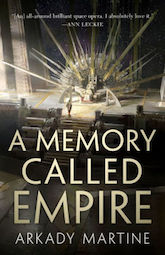I used to live on the roof of the world, trying to understand why some stories get preserved for millennia and other ones disappear. I spent three years there. I wasn’t alone: I had colleagues with me, all thinking very hard about narrative and storytelling and how to talk about the ways people used to tell stories, in the other country of the past, when what truth and verisimilitude and good storytelling might have meant very different things than what they mean to us now.
No, I hadn’t joined a monastery devoted to a cult of literary criticism, located in the far north. Promise.
I was a historian, and I worked at Uppsala University, on a research project called Text and Narrative in Byzantium. It’s where I learned about narratology. In a way, I became a narratologist myself.
Narratology is, broadly, the study of narrative structures and the way in which humans perceive, create, and are influenced by them. It’s a type of literary theory, and like most literary theory, it is full of terms that can seem overtly and deliberately obscure. (Why, for example, do we need the term focalization when we’ve already got the perfectly good and fairly explicable concept of point of view? There are some reasons, but most of the time I’ve found that point of view works just fine, especially when I’m speaking as a practitioner—a writer—rather than a literary analyst or critic.) But what narratology does—especially in its newer forms, like ‘cognitive narratology’—is give us tools to think about not only the patterns in a narrative but how narratives are part of how human beings understand and interpret events which happen to them in their everyday lives.
The French term narratologie was coined by Tzvetan Todorov, a Bulgarian-French historian, philosopher, and literary critic, in his 1969 book Grammaire du Décaméron. In that book, Todorov encouraged literary critics to shift their focus to the most general structural properties of a narrative, properties which would apply no matter what kind of narrative you looked at: things like sequencing of events, character, narrator, audience, perspective. Todorov’s call for a new way of thinking about narrative became the academic discipline of narratology. But he certainly wasn’t the first person to try to identify systems and patterns in storytelling.
Ancient Greek philosophers were awfully concerned with this, for example, because they were worried about genre: what kind of story is this, and how can we tell? (Is it the true kind or the made-up kind or something in-between?) In The Republic, Plato said there were basically two different kinds of storytelling: one, called mimesis, was an ‘imitation’—speech or thought or action made by characters who were inside the story. The other kind, diegesis, was for speech or thought or action that belonged to the author. This division is still fundamentally important to us in interpreting stories—we think about it when we think about narrators, point of view, and showing vs. telling. Plato wasn’t the only Greek who cared about narrative distinctions, either: Aristotle, in the Poetics, distinguished between the totality of events which could take place inside the world of the narrative and the actual plot that was narrated, which is only a subset of those events, chosen and arranged by the author on aesthetic grounds.
The discipline of narratology also took a great deal from a school of literary criticism called Russian Formalism, which was popular in the beginning of the 20th century in Tsarist Russia. One of the early groups of Russian Formalists was called OPOJAZ, or the Society for the Study of Poetic Language, and it was headed by a man named Viktor Shlovsky. Shlovsky wrote in his 1916 book, Iskússtvo kak priyóm (Art As Device) that a narrative is a sum of literary and artistic devices that the artist manipulates to craft his work. The Formalists were interested in breaking down each of these ‘devices’ and trying to see what functions they had in narratives. But they were also highly invested in not paying any attention—deliberately—to the historical or cultural context of a narrative. They only cared about functionality—about what a device did, not why it was there.
When I became a narratologist, I realized that the Formalists were extremely wrong. The functionality of narrative devices is completely dependent on the audience’s historical and cultural context… and on the author’s. A much more modern branch of narratology, called cognitive narratology, which focuses on the human intellectual and emotional processing of narratives, helped me to ask these questions as a historian—and as a writer. All of those little functional devices—how do they get processed? How do different humans react differently to them? Why did medieval Byzantine historians put obviously fake trope events—like emperors riding bravely into battles they weren’t even present for—into histories the writers swore were true and reported fact? How come readers say they feel ‘cheated’ when an author doesn’t write the ending they expected? Why, for that matter, is it so hard for human beings right now in 2019 to recognize and understand information that contradicts a narrative they believe in very strongly?
In short, I started thinking about why we want stories to make sense.
At the heart of cognitive narratology—really, at the heart of the whole mysterious discipline of narratologists—is a concept called the ‘storyworld’. It was named by the cognitive narratologist David Herman, and it is both intuitively simple and has deep consequences for thinking about how people engage with narratives. A ‘storyworld’ can be defined as a possible world constructed by, not only the narrative on the page, but the cognitive results of the process of comprehending the story, cued by the author and experienced and completed by the reader. It is bigger than any one narrative. It is a sort of “mental model” of a universe, containing all of the events, persons, places, and interactions that make up the narrative, plus all of the possible events, persons, places, and interactions which might exist in a world where the narrative-as-perceived also exists. A storyworld is thus a co-created world between author and audience, bound by mutually held-in-common rules of causality and verisimilitude—an assembly of referents that tell us what kind of stories are true and what sequences of events are believable, given the evidence of the world presented in the narrative.
Access to the storyworld takes place in the mind of the audience of the narrative. (It is no surprise that ‘storyworld’ is a term invented by cognitive narratologists—since they ask us to think of the act of reading/perceiving/interpreting narrative as something which occurs within the mind.) We can think of this process of access to the storyworld as having three elements, which the theorist Alan Palmer has defined as “the source domain”—the world the reader lives in, where the narrative is being processed by the reader’s mind—“the target domain”—the storyworld—and the “system of textual features that triggers various kinds of reader-held real-world knowledge that projects the reader from the source domain to the target domain”. This is where the deep consequences of the storyworld concept begin to emerge: storyworld thinking treats narrative as a process which moves the mind of the reader from the world they live in, with its perceivable rules, to the storyworld, which has different perceivable rules.
Buy the Book


A Memory Called Empire
Cognitively, the audience has a set of shared communal knowledge—we can call this an encyclopedia, like the French theorist Doležel does—which they use to comprehend the text. This encyclopedia, says Doležel, “varies with cultures, social groups, [and] historical epochs”—the shared communal knowledge of a 10th-century Byzantine intellectual is clearly not the same as that of a 21st-century Byzantinist trying to understand narratives in Sweden in 2015, let alone that of a teenager somewhere in America reading her first graphic novel. We can think of the reader/perceiver’s knowledge about the storyworld, filtered through their own knowledge about the universe, as their fictional encyclopedia. In order to “reconstruct and interpret” a narrative, the reader/perceiver must “reorient his cognitive stance to agree with the [story]world’s encyclopedia”. (That’s Herman again, explaining how storyworlds are cognitive processes.)
Storyworlds are, therefore, not confined to genres that we traditionally consider ‘fiction’. A storyworld can also be ideological: “stories construed as strategies for building mental models of the world” applies just as well to conceptions of ‘how a state functions’ as it does to ‘what is a plausible event in a novel’. A person can reorient their cognitive stance to match an ideological narrative interpretation of historical events just as well as they can do so to interpret the narrative of a novel or a television show.
We can in fact imagine all of society as a storyworld. But my storyworld—my rules for how the world ought to behave—are different from my neighbor’s, who has had different experiences than me. The stories that make sense to my neighbor may be incomprehensible when I think about them, and vice versa. This is how fanaticism happens: how people believe things which are not true, even when they’re presented with evidence to the contrary. It doesn’t match the narrative. It doesn’t fit in the story. The world doesn’t make sense with this evidence, so the evidence must be wrong.
It is also the key to understanding how to convince someone—whether you’re an author, a politician, a scientist, or just trying to get along better with your neighbor. Can you fit the new information you’re presenting into your audience’s storyworld so that they don’t reject it out of hand? If no readers blink when your handwavium whisks your protagonist away through a wormhole into a distant part of the galaxy, you’ve built the storyworld of your narrative convincingly enough that wormholes are a true and plausible thing. If you can convince Great-Uncle Malcolm that climate change is real, even though it is snowing outside, by asking him if it snowed more often when he was a child, then you’ve fit your information into his narrative of how the universe works: into the storyworld that governs his everyday interpretations.
And that is the power of the mysterious discipline of narratologists: it tells us why stories make sense, and why we want them to so very desperately.
Originally published in January 2019.
Photo: Nepal, Himalayas. National Park Langtang image © Sergey Pesterev / Wikimedia Commons /
Arkady Martine writes speculative fiction when she isn’t writing Byzantine history. She is overly fond of borders, rhetoric, and liminal spaces. Her novel A Memory Called Empire is available from Tor Books. Find her on Twitter as @ArkadyMartine.










